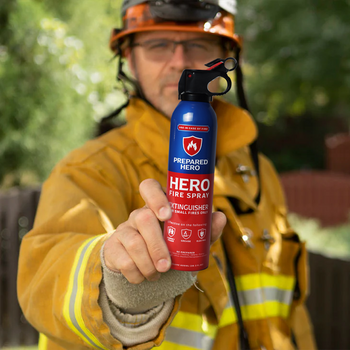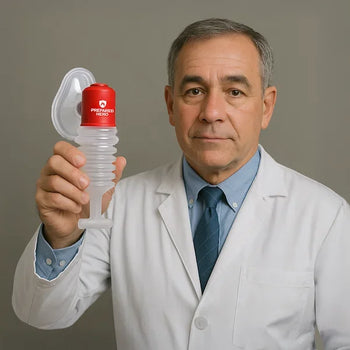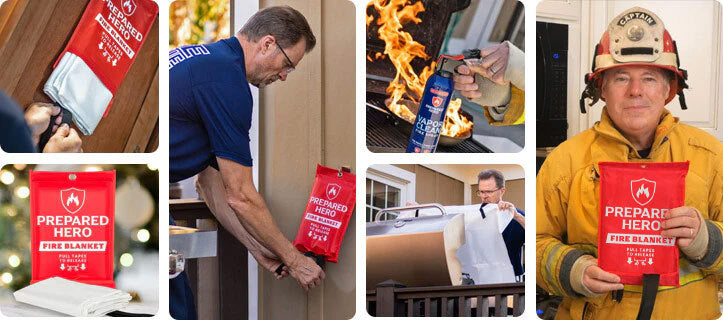Where you put your smoke detectors matters just as much as installing them. Proper placement makes sure they can detect...
Your dryer works hard. Every week, it takes care of loads of towels, clothes, and bedding. But just like any other appliance, it needs some TLC to stay safe and run well. Ignoring your dryer can lead to slow drying times, higher energy bills, and a fire hazard. In this guide, we’ll walk through how to clean your dryer to prevent such problems.
Why Clean Your Dryer?

It’s not just about looks. Cleaning your dryer:
- Improves performance
- Reduces drying time
- Cuts down energy bills
- Extends the life of your machine
- Lowers fire risk
- The National Fire Protection Association says dust, fiber, and lint buildup are the number one cause of dryer-related house fires. Cleaning your dryer keeps your home and family safe.
What You’ll Need

Before you start, grab these supplies and tools:
Supplies
- Microfiber cloth
- White vinegar and water mix (50/50)
- Dish soap or detergent
- Nylon brush
Tools
- Dryer cleaning brush (like a rotary brush)
- Vacuum with hose attachment
- Screwdriver (if your vent has clamps)
1. Clean the Lint Trap
The lint trap should be cleaned after every single load. Simply pull out the lint screen and peel off the lint using your fingers. Once that’s done, grab your vacuum with a crevice tool and clean inside the lint trap housing. Lint can fall into the slot over time, and removing it keeps the dryer running efficiently.
If your dryer has metal moisture sensor strips inside the drum near the lint trap, wipe them down with a damp cloth. These strips can get coated and stop working properly if left dirty. Learn more about cleaning a dryer lint trap here.
2. Unplug the Dryer
Make sure your dryer is off before cleaning it. If it’s an electric dryer, unplug it from the wall. If you have a gas dryer, turn off the gas supply, disconnect the gas line, and cap it securely. This step is all about safety because cleaning a dryer while it’s plugged in or connected to gas is never a good idea. Always cut the power before starting any deeper maintenance.
3. Clean the Drum
The inside of your dryer drum might look clean, but over time, it can build up residue from dryer sheets, fabric softener, or detergent. Start by vacuuming out any loose lint or dirt. Then, dampen a cloth with warm water and a drop of dish soap, and wipe down the entire interior of the drum.
Use a nonflammable liquid cleanser for gas dryers. After cleaning, use a second cloth with just water to remove any soapy residue. Then, leave the door open for a while to air dry, or run a short, empty cycle with clean towels.
4. Pull the Dryer Away From the Wall
Gently pull the dryer away from the wall to reach the vent and hose in the back. You only need about a foot or two of space to work comfortably.
Dryers are heavy, so move them slowly and ask someone to help if needed. Be careful not to tug too hard on the vent hose or power cord while shifting the machine. This step sets you up for cleaning the parts that most people forget, but where the real problems tend to start.
5. Disconnect the Vent Hose
Now that you can access the back of the dryer, locate the vent hose. If it’s secured with clamps, loosen them with a screwdriver. If it’s held with tape, carefully peel it off. Gently pull the vent hose away from the back of the machine.
Be patient because old hoses can be fragile, especially if they’re made of foil or plastic. Once disconnected, set the hose aside so you can clean it and the opening on the dryer.
6. Clean the Vent Hose
This is where lint hides. Start by removing any large clumps from inside the vent hose using your hands. Then, take your dryer vent brush or rotary tool and push it through the entire length of the hose to dislodge stuck lint.
Follow up by vacuuming both ends of the hose with your hose attachment to suck out the loosened debris. If the hose is clogged or damaged, consider replacing it altogether. A clean, clear hose allows proper airflow and reduces fire risk.
7. Check and Clean the Outside Vent
Head outside to find the external dryer vent. It’s usually located on an outside wall or sometimes on the roof. Open the cover and remove any visible lint or blockages. Use the same brush you used for the hose to sweep the inside of the vent duct. Then, vacuum around the area to make sure it’s completely clear. Finally, check that the vent flap opens and closes easily. If it’s stuck or damaged, replace it to keep pests out and air flowing freely.
8. Reconnect and Power Up
Once everything is clean and lint-free, reconnect the vent hose to the dryer and secure it with clamps or new tape. Learn more about installing a dryer vent hose here. Make sure it’s not kinked or crushed, since that can restrict airflow.
Then, plug the dryer back in or reconnect the gas line (don’t forget to open the gas valve if you shut it off earlier). Carefully push the dryer back into position, giving it just enough space behind to keep the hose from bending too sharply.
9. Run an Empty Cycle
Run the dryer on high heat for 10 to 15 minutes without clothes inside after reassembly. This helps clear out any loose lint or dust that may still be floating around. It also gives you a chance to listen for unusual sounds or check that the dryer is venting properly outside. If you notice any problems, stop and check your connections again before using the dryer normally.
10. Wipe Down the Exterior
Finish up by giving the outside of your dryer a quick clean. Spray a mix of water and vinegar onto a microfiber cloth and wipe down the top, sides, and control panel. Dryer tops tend to collect dust, lint, and spilled detergent over time. Keeping the outside clean makes your laundry room feel more organized. It also gives you a visual reminder that your machine is now in top shape.
How Often Should You Clean Your Dryer?

You should clean the lint screen after every load with no exceptions. Deep clean the lint trap area and the drum monthly. As for the vent hose and exterior vent, a full clean once every 12 to 24 months is usually enough.
But if you notice that your clothes are taking longer to dry, or if the dryer feels unusually hot, check and clean those parts sooner. Staying on top of this routine helps your dryer last longer and saves you money in the long run.
What Happens if You Don’t Clean the Dryer?
Your dryer won’t work as well, and it could become dangerous if you don’t clean it. Most of us clear the lint trap now and then, but that’s not enough. Lint also builds up inside the vent, where it blocks airflow and makes your dryer work harder. This leads to longer drying times, higher energy bills, and extra wear on your machine. Over time, it can burn out the heating element, which is expensive to replace.
Even worse, clogged vents are a major fire hazard. Lint is highly flammable, and local fire departments respond to an estimated 15,970 home fires involving dryers or washing machines each year. Most are caused by not cleaning the vent. So, if you want your dryer to last and stay safe, regular maintenance is a must.
Can You Run a Dryer Empty to Clean It?

Yes, you can safely run a dryer empty, and it’s helpful when you’re cleaning it. After a deep clean, running an empty cycle helps blow out leftover lint or dust. It also helps get rid of smells if you toss in a cloth dampened with vinegar. Some new dryers even need a quick empty cycle to burn off any factory gases before their first use.
Just make sure the lint trap is clean before starting. A blocked trap can be a fire risk, even if the drum’s empty. Plus, don’t leave the dryer running while you’re out of the house. It’s always better to be nearby just in case. While running a full load is more energy efficient, the occasional empty cycle is totally fine, especially when it’s part of keeping your dryer in good shape.
Can I Use a Leaf Blower to Clean the Vent?
You can technically use a leaf blower to clean the vent, but only if your vent hose is straight and short. Leaf blowers can push out lint quickly, but they won’t dislodge stuck debris like a brush will. Use with caution and never indoors.
What if My Dryer Still Isn’t Working After I Clean It?

If you’ve cleaned everything and it’s still slow or hot, it could be a clogged moisture sensor or something mechanical. Try wiping the sensor and checking the vent again. If that doesn’t help, call a repair tech.
Is Dryer Sheet Residue a Problem?
Yes. Dryer sheets leave behind a film that can coat your lint screen and moisture sensors, making them less effective. Every few months, wash your lint screen with dish soap and a soft brush to remove buildup.
Can I Skip Cleaning the Outside Vent?

You shouldn’t. That’s where most of the hot air escapes. If it’s blocked, air stays trapped and lint piles up in the hose. Cleaning the outside vent is a key part of dryer safety.
Do I Really Need a Special Dryer Cleaning Brush?
It helps a lot. Dryer vent brushes are designed to bend and reach inside tight ductwork. They’re cheap, easy to use, and can save you a ton of effort. It’s totally worth the small investment.
How to Deep Clean a Tumble Dryer

Deep cleaning your tumble dryer doesn’t take long, but it makes a big difference. Start by switching off the machine and letting it cool. Pull out the lint filter and rinse it under cool water. Then, use a soft brush to scrub away any dust. Let it air-dry completely before putting it back. While it’s drying, vacuum around the filter housing using a soft brush attachment.
Next, empty the water tank if you have a condenser or heat pump dryer. Rinse the tank and any filters under running water and dry them well. For the drum, wipe it with a damp microfiber cloth. Use white vinegar if it smells musty, but avoid the rubber seal.
If your dryer has a moisture sensor or condenser, give those a wipe or rinse as needed. Always check your manual for exact instructions. Lastly, clean the outside with a cloth and leave the door slightly open to air out.
Conclusion
Keeping your dryer clean isn't just about saving time or money. It’s about safety, too. Lint buildup is a dangerous fire hazard that’s easy to overlook. That’s why cleaning the vent, hose, and drum regularly matters. Along with cleaning, it’s smart to keep fire prevention tools nearby, like fire blankets and fire sprays. They add a layer of protection in case something goes wrong.
Do you want reliable, easy-to-use, and affordable tools to put out small fires before they spread? Check out Prepared Hero’s fire prevention tools here, and get up to 51% off on certain items. Stay prepared, hero!


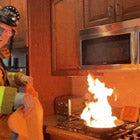 Fire
Fire Safety
Safety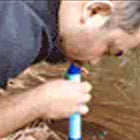 Survival
Survival Protection
Protection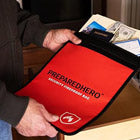 New
New
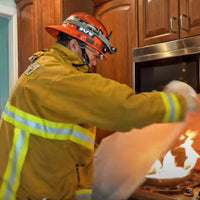 Fire
Fire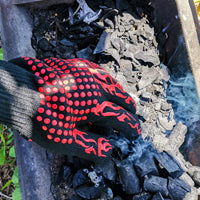 Safety
Safety Survival
Survival Protection
Protection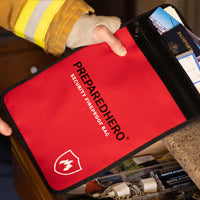 New
New



